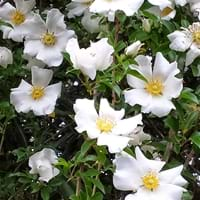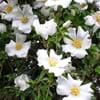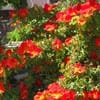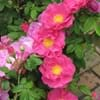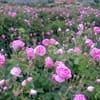Life Span
Perennial
Perennial
Type
Flowering Plants, Ornamental Plant, Perennial, Shrub
Bulb or Corm or Tuber
Origin
Laos, Southern China, Taiwan, Vietnam
Southern Africa, South Africa
Types
Not Available
Cusick's camas, large camas
Number of Varieties
Not Available
Habitat
Not Available
meadows, moist forests, Open Plains
USDA Hardiness Zone
Not Available
8-10
AHS Heat Zone
Not Available
Not Available
Sunset Zone
Not available
21,22
Habit
Clump-Forming
Rosette/Stemless
Flower Color
White
White, Yellow, Red, Blue, Purple, Pink, Lavender, Violet
Flower Color Modifier
Bicolor
Bicolor
Fruit Color
Non Fruiting Plant
Not Available
Leaf Color in Spring
Green
Green
Leaf Color in Summer
Green
Light Green
Leaf Color in Fall
Green
Several shades of Green
Leaf Color in Winter
Green
Light Green
Leaf Shape
Pinnate
Long slender
Plant Season
Spring, Summer, Fall
Spring, Winter
Sunlight
Full Sun, Partial Sun
Full Sun, Partial Sun
Growth Rate
Medium
Medium
Type of Soil
Loam, Sand
Loam
The pH of Soil
Acidic, Neutral
Acidic, Neutral
Soil Drainage
Well drained
Well drained
Bloom Time
Spring, Late Spring, Early Summer, Summer, Late Summer, Early Fall, Fall
Early Spring, Spring, Late Winter, Indeterminate
Repeat Bloomer
Not Available
No
Tolerances
Drought
Black Walnut Toxicity, Rabbit, Shade areas
Where to Plant?
Container, Ground, Pot
Container, Ground, Pot
How to Plant?
Cuttings
chipping, Offsets, scooping, Twin scaling, Vegetative
Plant Maintenance
Medium
Low
Watering Requirements
Average Water Needs
Medium
In Summer
Lots of watering
Lots of watering
In Spring
Moderate
Moderate
In Winter
Average Water
Average Water
Soil pH
Acidic, Neutral
Acidic, Neutral
Soil Type
Loam, Sand
Loam
Soil Drainage Capacity
Well drained
Well drained
Sun Exposure
Full Sun, Partial Sun
Full Sun, Partial Sun
Pruning
Remove damaged leaves, Remove dead branches, Remove dead leaves
Remove damaged leaves, Remove dead branches, Remove dead leaves
Fertilizers
All-Purpose Liquid Fertilizer
All-Purpose Liquid Fertilizer, General garden fertilizer, Time release fertilizer
Pests and Diseases
Beetles, Black Spot, Caterpillars, Downy mildew, Mosaic viruses, Powdery mildew, Rust, Scale insects, Thripes
Pests and diseases free
Plant Tolerance
Drought
Black Walnut Toxicity, Rabbit, Shade areas
Flower Petal Number
Double
Single, Double, Semi-Double
Edible Fruit
Not Available
No
Foliage Texture
Medium
Medium
Foliage Sheen
Glossy
Glossy
Invasive
Not Available
No
Self-Sowing
Not Available
No
Attracts
Birds, Butterflies
Insects
Aesthetic Uses
Showy Purposes
Bouquets, Cottage Garden
Beauty Benefits
Not Available
For treating wrinkles, Remove blemishes, Skin Problems
Environmental Uses
Air purification
Air purification, Forms dense stands, Very little waste
Medicinal Uses
Not Available
Leucoderma, Urinary problems
Part of Plant Used
Flowers
Bulbs, Root
Other Uses
Oil is used in perfume, soaps, creams, etc.
Animal Feed, Decoration Purposes, Showy Purposes
Used As Indoor Plant
Yes
Yes
Used As Outdoor Plant
Yes
Yes
Garden Design
Container, Cutflower, Feature Plant, Foundation, Mixed Border, Topiary / Bonsai / Espalier
Bedding Plant, Container, Cutflower, Mixed Border, Rock Garden / Wall
Botanical Name
Rosa laevigata
Hyacinthus orientalis
Common Name
Cherokee Rose
Hyacinth, common hyacinth, garden hyacinth, dutch hyacinth
In Hindi
Cherokee rose
ह्यचीन्थ
In German
Die Cherokee-Rose
Hyazinthe
In French
Le rosier des Cherokees
jacinthe
In Spanish
rosa cherokee
jacinto
In Greek
Cherokee rose
υάκινθος
In Portuguese
Cherokee rose
jacinto
In Polish
Cherokee rose
hiacynt
In Latin
Cherokee rose
et hyacinthinas,
Phylum
Magnoliophyta
Magnoliophyta
Class
Magnoliopsida
Liliopsida
Family
Rosaceae
Liliaceae
Clade
Not Available
Angiosperms, Monocots
Tribe
Not Available
Not Available
Subfamily
Not Available
Scilloideae
Number of Species
Not Available
Season and Care of Cherokee Rose and Wild Hyacinth
Season and care of Cherokee Rose and Wild Hyacinth is important to know. While considering everything about Cherokee Rose and Wild Hyacinth Care, growing season is an essential factor. Cherokee Rose season is Spring, Summer and Fall and Wild Hyacinth season is Spring, Summer and Fall. The type of soil for Cherokee Rose is Loam, Sand and for Wild Hyacinth is Loam while the PH of soil for Cherokee Rose is Acidic, Neutral and for Wild Hyacinth is Acidic, Neutral.
Cherokee Rose and Wild Hyacinth Physical Information
Cherokee Rose and Wild Hyacinth physical information is very important for comparison. Cherokee Rose height is 200.00 cm and width 300.00 cm whereas Wild Hyacinth height is 10.20 cm and width 5.10 cm. The color specification of Cherokee Rose and Wild Hyacinth are as follows:
Cherokee Rose flower color: White
Cherokee Rose leaf color: Green
Wild Hyacinth flower color: White, Yellow, Red, Blue, Purple, Pink, Lavender and Violet
- Wild Hyacinth leaf color: Green
Care of Cherokee Rose and Wild Hyacinth
Care of Cherokee Rose and Wild Hyacinth include pruning, fertilizers, watering etc. Cherokee Rose pruning is done Remove damaged leaves, Remove dead branches and Remove dead leaves and Wild Hyacinth pruning is done Remove damaged leaves, Remove dead branches and Remove dead leaves. In summer Cherokee Rose needs Lots of watering and in winter, it needs Average Water. Whereas, in summer Wild Hyacinth needs Lots of watering and in winter, it needs Average Water.
